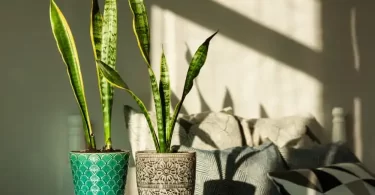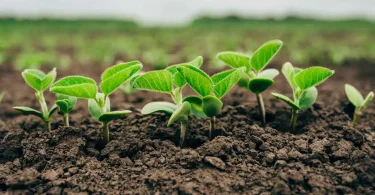Hostas are world-famous day-neutral plants that grow in moderate shade and are admired by those who want to add texture and color to their shady garden setting. In this case, the easiest thing would be to identify the right time to plant these flowers then get down to it and do it to the best of our capabilities. This guide will highlight the planting times for hostas When to plant Hostas and the conditions necessary to ensure the health and beauty of this commonly used perennial plant.

Understanding Hostas and Their Growth Cycle
Hostas are perennial plants, that are cultivated mostly for the beauty of their foliage, which may vary considerably in size, and color from dark blue-green to light yellow and white. They are adapted to a large range of climatic conditions and grow in the USDA hardiness zones 3-9. Its life cycle is directly influenced by the seasons, and new leaves sprout from the plant in spring while it experiences a period of growth in summer and becomes dormant during winter.
Best Time to Plant Hostas
1. Spring Planting
In general, spring is the most recommended season for planting hostas.
Emerging from Dormancy:
In early spring, the hostas start growing from the ground after winter break. They can prop roots and prepare before scorching summer sets in when planting is done.
Cooler Temperatures:
In spring, temperatures are slightly low thus minimizing the possibility of the transplanted plants experiencing some distress due to the changing climate.
Adequate Moisture:
There is usually regular rainfall in spring and this is good for the soil since hostas require moisture when they are developing their root systems.

Timing Tips for Spring Planting:
- Ideally, hostas should be planted after the last frost in a certain region or climate. The ground should be in a condition that can allow work to be done without any interruption due to hard frozen soil.
- It could be as early as the last week of February or the first week of March in the warmer areas while it could be late April or early May in the colder regions.
2. Fall Planting
It is equally possible to plant hostas in the fall if the climate is not too harsh during the winter.
Root Development:
Planting in the fall allows the hostas to develop a better root system during the early stages of their growth. The increase in temperature during this season is ideal for root growth as it is not as hot or dry as in the summer.
Less Competition from Weeds:
During the fall, weeds are not as competitive as they are during the spring and summer because they are not as dominant as they used to be when rooting for nutrients and water sources.

Preparation for Dormancy:
As hostas die back, they can devote their energies toward root development instead of exclusively top growth, which will aid with the plant’s emergence in the spring.
Timing Tips for Fall Planting:
- Hostas should be planted six weeks before the first expected hard frost. This creates space for the development of root systems.
- This is usually done in the latter part of September in the cooler climates of the growing regions, but it can stretch to the first week of October in warmer climates.
Conditions for Planting Hostas
Regardless of the season you choose to plant your hostas, ensuring the right conditions is essential for their growth:
Soil:
These hardy perennials grow best in well-drained, fertile soil, with a pH ranging from 6. Adding more compost or organic manure can help in drainage and provide the plants with the nutrients they need.

Location:
While there are many varieties of hostas, most are best placed in full to partial shade, in an area with a few hours of direct sun in the morning followed by shade in the afternoon. Do not plant in places where the plant will be in deep shade or full sun because this will affect the growth of the plant and the leaves will be burned.
Spacing:
Give your hostas room enough to reach their full size by planting them in locations that will not limit their growth. Some varieties may only require approximately 18 inches of space while others may require as much as 36 inches.
Preparing for Planting
Prepare the site thoroughly, Before planting hostas:
1. Remove Weeds:
Remove unnecessary plant species from the area to reduce their competition for scarce resources such as water and nutrients.
2. Amend the Soil:
Bury in organic material such as compost to increase soil aeration and nutrient content.

3. Dig the Hole:
The hole should be about twice as wide and the same depth as the root ball of the hosta plant. This makes the spread of roots easy.
4. Planting:
Put the hosta into the hole with the crown – the joining of roots and stems – positioned at soil level or slightly higher. Using soil, then place the roots and pat and make it compact.
Post Plant Care of Newly Planted Hostas
After planting, the aftercare of your hostas is crucial for their successful establishment:
Watering:
Ensure that the soil remains humid at all times, particularly during dry seasons. The best soil condition for hostas is a moist one but it does not mean that it likes a soggy soil because this leads to root rot.
Mulching:
Spread 2 to 3 inches of mulch around the base of the plant to imprison moisture and moderate the temperature of the soil as well as to control the weeds.
Protection from Pests:
Any gardener understands that slugs and snails love hostas very much. Instead, you may want to opt for slug pellets, copper tape, or introducing natural enemies to your plants.

Conclusion
Timely planting of hostas and the conditions under which they are planted can either make or mar the growth and development of such plants. It does not matter whether the planting is done in spring or fall; as long as you water adequately, use the right soil, and protect against pests, the hostas will grow. Even though they come in a limited number of cultivars, hostas come in many different colors, and beautiful luxurious foliage, they can be a thing of beauty for many years for any garden. Read more…



